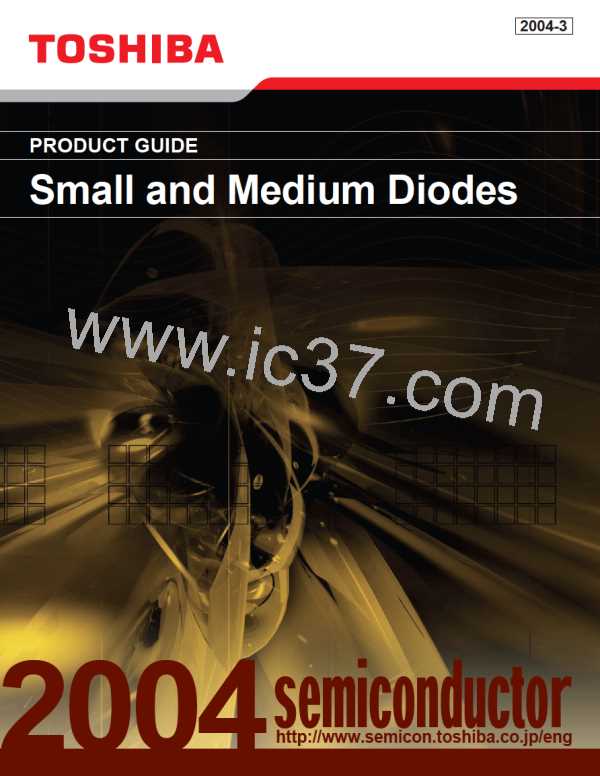4 . S ym b o ls a n d Te rm s
Symbols
Terms
Definitions
Maximum average current value at a half sine wave (conduction
angle 180˚) of commercial power supply frequency (50 Hz / 60 Hz)
that can flow in the diode under specified conditions
Average Forward Current
I
F (AV)
Maximum average current value at the full sine wave (conduction
angle 360˚) of commercial power supply frequency (50 Hz / 60 Hz)
that can flow in the diode under specified conditions
Average Output Current
Io
Peak Repetitive Reverse
Voltage
Instantaneous maximum allowable value of reverse voltage that
can be applied repeatedly to the diode
VRRM
Non-repetitive maximum allowable peak current in one cycle of a
50-Hz sine wave (conduction angle 180˚) that can flow in the
forward direction of the diode at a specified junction temperature.
This rating is only applied for an abnormal operation, which seldom
occurs during device’s lifespan.
Non-Repetitive
Peak Surge Current
IFSM
The maximum junction temperature at which the device's reliability
and lifetime can be guaranteed.
To enhance reliability of a device, please note that 80% derating for
the Tj rating is recommended.
Junction Temperature
Storage Temperature
Tj(max)
The storage temperature Tstg refers to the ambient temperature
range within which the device can be stored while not operating
T
stg
Maximum reverse-leakage current value when the specified reverse
Peak Repetitive Reverse
Current
IRRM
VFM
trr
voltage V
is applied
RRM
Maximum value of voltage drop when the specified forward current
flows
Peak Forward Voltage
Reverse Recovery Time
Zener Voltage
I
FM
The time required for the current to reach a specified reverse current,
after instantaneous switching from forward to reverse
(See Figure 1 below.)
Voltage value when the specified IZ current flows in reverse
between the anode and cathode of a zener diode
VZ
Ratio of change in zener voltage to corresponding change in
specified current IZ in zener area
Zener Impedance
rd
Temperature Coefficient
of Zener Voltage
Ratio of change in zener voltage to corresponding change in
junction temperature
T
Maximum power dissipation under specified conditions
Zener Power Dissipation
P
9

 TOSHIBA [ TOSHIBA ]
TOSHIBA [ TOSHIBA ]